Higher classification Iguanidae | Phylum Chordata Suborder Iguania Scientific name Iguana Tail length Blue iguana: 51 – 76 cm | |
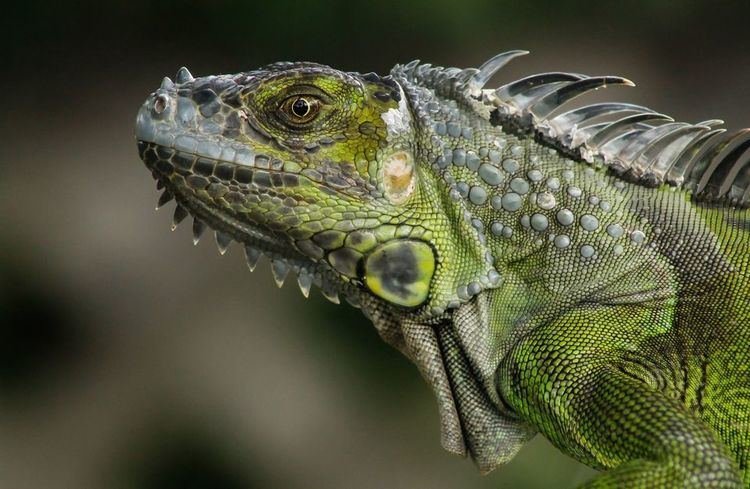 | ||
Genus IguanaLaurenti, in 1768 Mass Green iguana: 4 kg, Blue iguana: 14 kg Length Green iguana: 30 – 42 cm, Marine iguana: 60 – 100 cm, Blue iguana: 51 – 76 cm Clutch size Green iguana: 20 – 71, Blue iguana: 1 – 21 Lower classifications Green iguana, Lesser Antillean iguana | ||
Iguana (/ɪˈɡwɑːnə/, [iˈɣwana]) is a genus of omnivorous lizards native to tropical areas of Mexico, Central America, South America, and the Caribbean. The genus was first described in 1768 by Austrian naturalist Josephus Nicolaus Laurenti in his book Specimen Medicum, Exhibens Synopsin Reptilium Emendatam cum Experimentis circa Venena. Two species are included in the genus Iguana: the green iguana, which is widespread throughout its range and a popular pet, and the Lesser Antillean iguana, which is native to the Lesser Antilles and endangered due to habitat destruction.
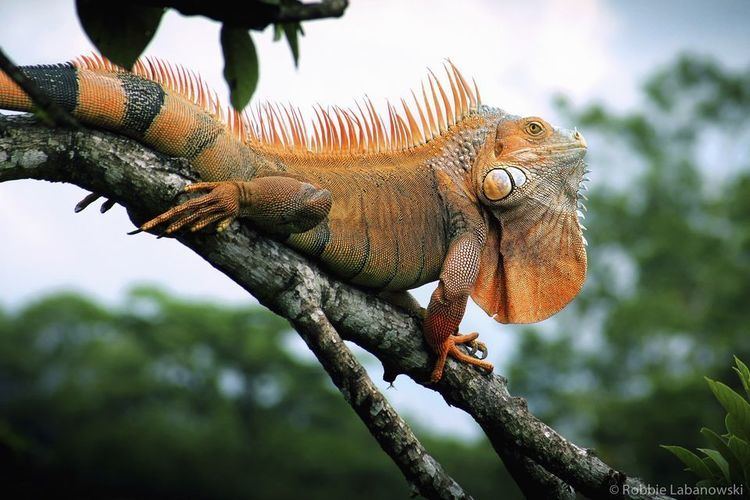
The word "iguana" is derived from the original Taino name for the species, iwana.
In addition to the two species in the genus Iguana, several other related genera in the same family have common names of the species including the word "iguana".
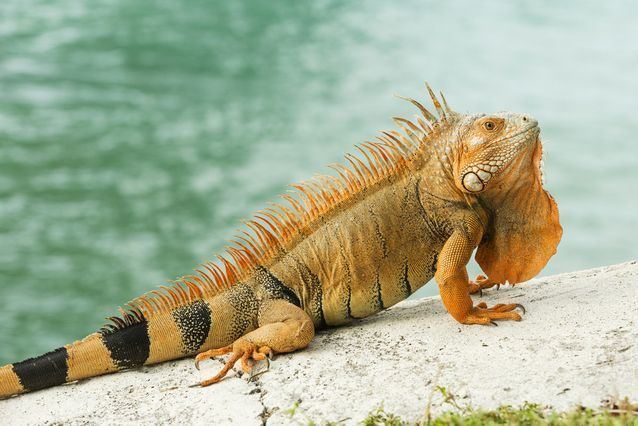
Anatomy and physiology
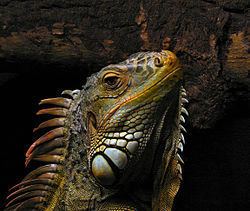
Iguanas can range from 5 to 6 feet (1.5 to 1.8 m) including their tail. The two species of lizard within the genus Iguana possess a dewlap, a row of spines running down their backs to their tails, and a tiny "third eye" on their heads. This light-sensing organ is known as the parietal eye, visible as a pale scale on the top of the head, and cannot make out details, just brightness. Behind their necks are small scales which resemble spokes, known as tuberculate scales. These scales may be a variety of colors and are not always visible from close distances. They have a large round scale on their cheeks known as a subtympanic shield.
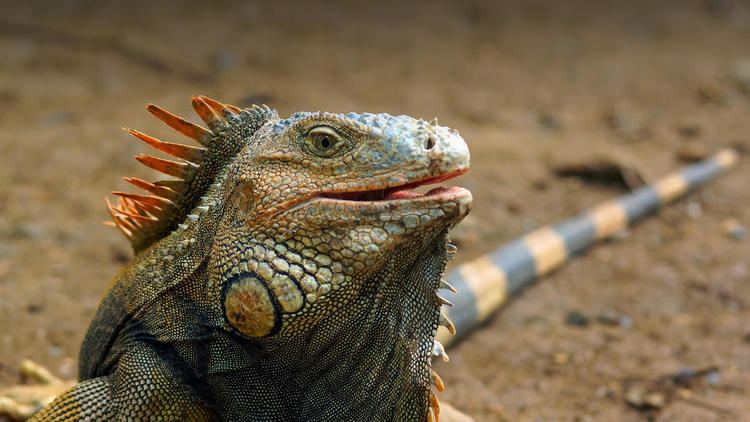
Iguanas have keen vision and can see shapes, shadows, colors, and movement at long distances. Their visual acuity enables them to navigate through crowded forests and to locate food. They employ visual signals to communicate with other members of the same species.
The tympanum, the iguana's eardrum, is located above the subtympanic shield (or "earshield") behind each eye. Iguanas are often hard to spot, as they tend to blend into their surroundings and their coloration enables them to hide from larger predators.
Male iguanas, like other male examples of Squamata, have two hemipenes.
